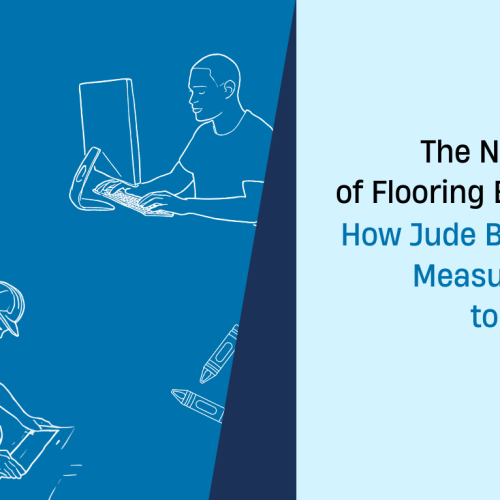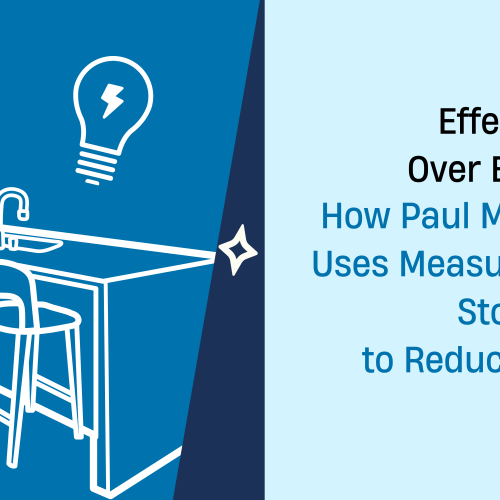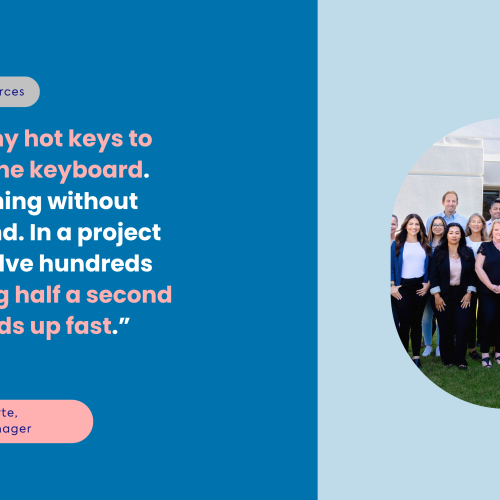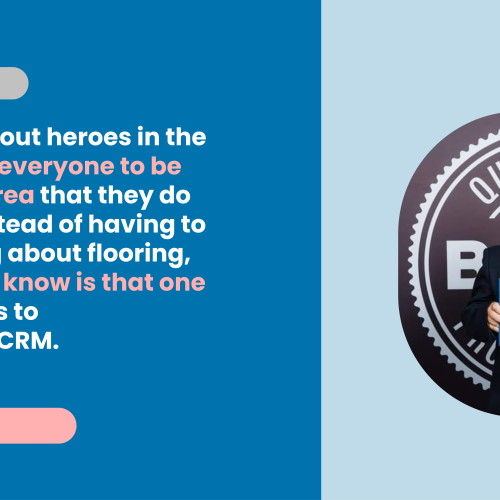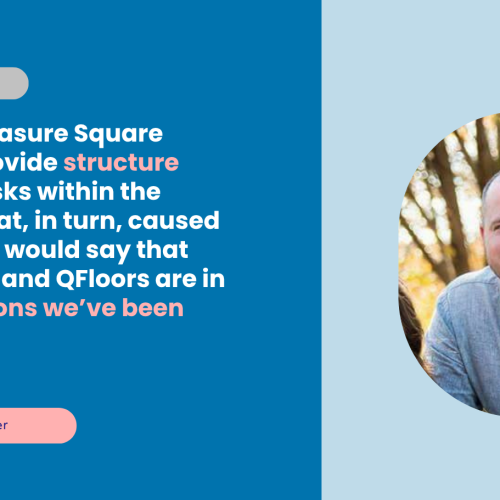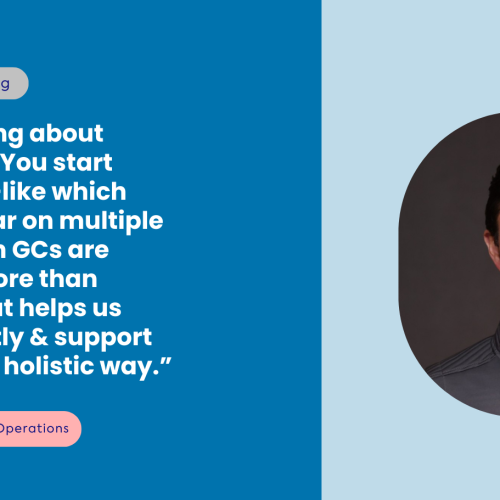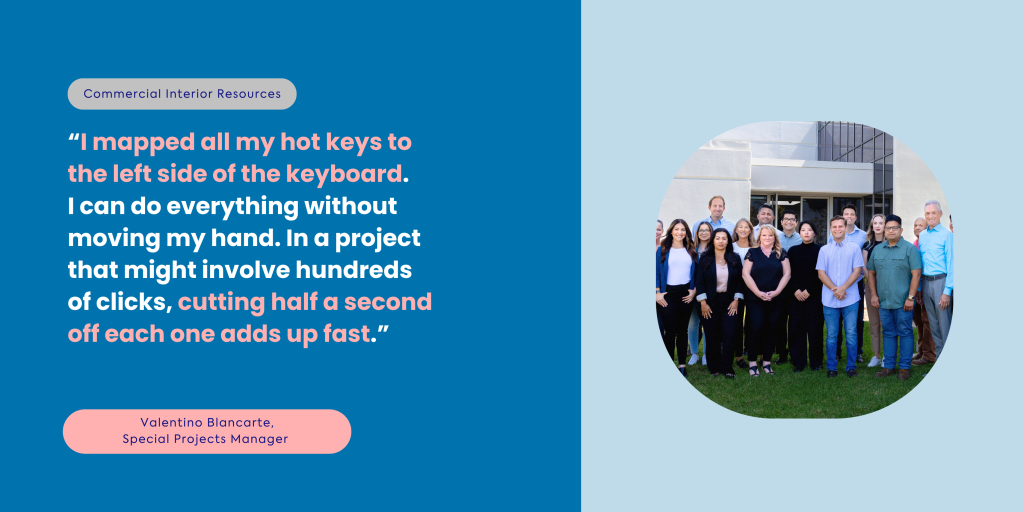
Overcoming the Learning Curve: CIR’s Path to Scalable Success with MeasureSquare 8
- 18 Jul, 2025
- Customer Stories, MeasureSquare 8

Valentino Blancarte, Special Projects Manager at Commercial Interior Resources (CIR), a commercial flooring contractor based in Southern California and FUSE member, is no stranger to operational overhauls. As head of estimating, he reimagined the entire project lifecycle, from RFP intake through final closeout. One of the biggest turning points during that transformation? CIR’s adoption of MeasureSquare 8 Commercial in 2019.
What followed was a period of rapid growth: CIR increased its revenue by 88.37% over a 5-year period. Here’s how Valentino guided his estimating team through the transition, overcame key challenges, and helped position the company for scalable success.
CIR’s Evolution
As CIR began to take on larger commercial projects, its existing takeoff software, Callidus, couldn’t keep up. That’s when Valentino began exploring alternatives.
After testing several solutions, Valentino found that MeasureSquare 8 initially stood out for its modern user interface. “Other programs looked Windows '95-esque. Measure Square looked more modern,” Valentino said. But what really sealed the deal was the ability of MeasureSquare 8 to handle large-scale projects with ease.
“With Callidus, when we worked on multistory buildings, we had to manage separate files for each floor. Just working out how to do that took time away from actually moving the project forward.”
MeasureSquare 8 eliminated that bottleneck. Its Tabs feature allowed users to manage multiple areas of a project within a single file, perfect for multilevel jobs or multi-phase rollouts.
By early 2019, CIR began phasing out Callidus and transitioning to Measure Square. But the switch wasn’t without its growing pains.
Early Roadblocks: Adoption and Accuracy
Initially, the residential and retail-leaning setup of MeasureSquare 8 didn’t reflect CIR’s commercial workflow. On top of that, CIR’s estimators were used to how Callidus calculated waste and material quantities, details that directly impacted their competitiveness in bids.
Valentino compares the transition to learning Photoshop:
“It was like opening a complex program with no manual. We didn’t know which settings to tweak, like seam overlaps and stretch size. The small details that affect quantities. And the commercial workflow process that we needed replicated within MeasureSquare 8 just was not built into the program yet. So we did use the Measure Square training program and many other online resources, but at the early stages that adaptation to a commercial workflow just wasn’t there yet.”
Rather than abandon the rollout, Valentino customized the settings in MeasureSquare 8 to more closely mirror that of Callidus’. That made the platform more intuitive for his team and ensured consistent material usage across bids.
“Fortunately, I was able to figure it out by trial and error, and that's my specialty. I was able to make Measure Square reflect the quantities and the behavior of Callidus. So then if we drew it on Callidus or Measure Square, both projects would vary very, very slightly. And so once it got to that point, everybody liked it.”
From Steady Growth to Major Gains: Scaling with Measure Square
It took about 1-2 years for CIR to fully adopt Measure Square and climb the learning curve. But by year three, the impact was clear.
The bottleneck in estimating disappeared, and, combined with other contributing factors such as a growing estimating team and increased proficiency with the software, this led to rapid growth in project sales. By year four, sales had jumped by more than 50%, and within two more years, CIR had nearly doubled that milestone.
Measure Square also gave CIR the capability to take on its largest project to date, valued at over $6 million, which played a major role in achieving that record-breaking year in 2024.
The Tools That Transformed CIR’s Workflow
According to Valentino, three key features in MeasureSquare 8 were game changers:
1. Hot Keys for Faster Workflows
“I mapped all my hot keys to the left side of the keyboard. I can do everything without moving my hand. In a project that might involve hundreds of clicks, cutting half a second off each one adds up fast.”
This optimization alone shaved 1–2 hours off projects that used to take 8 hours.
2. Image IntelliSense (Now Align on Path)
“It’s subtle but powerful. You get quick, accurate alignment when drawing floor plans. Saving even milliseconds per task adds up over hundreds of actions.”
3. Tabs & Phases for Complex Jobs
On large projects (like hotels or event spaces) CIR often needs to separate front-of-house, back-of-house, and shared areas, for example. The Tabs and Phases features in MeasureSquare 8 made it easy to break jobs down, estimate specific rooms, and generate area-specific reports.
“It follows the workflow all the way to the installer. Being able to send quick, precise printouts for each section made a big difference.”
A Costly Lesson in Detail
Of course, not every lesson came easy.
In one project, CIR’s team didn’t realize that grout lines in MeasureSquare 8 reduce the net square footage of tile—leading to a shortage after materials were ordered.
“It wasn’t a huge amount, but the tile was coming from Italy. Between manufacturing and shipping delays, that one miscalculation turned into a substantial delay. It was a costly lesson.”
Valentino now uses that example as a training opportunity: overlooking or just not knowing about small setup details in estimating software can have major downstream consequences.
Note that at the time, tile estimates in MeasureSquare 8 included grout spacing (e.g., 1/8" or 1/16"), which subtly reduced the net coverage per tile. If users didn’t realize this impact on total square footage, they may have underordered materials. That’s exactly what happened in this case: the calculated area appeared sufficient, but the actual quantity of material fell short once grout spacing was factored in.
For new users currently experiencing blind spots due to the learning curve, know that Measure Square offers numerous support resources, including an in-house support team, a 24/7 AI chatbot, YouTube tutorials, Knowledge Base articles, and a Facebook group where Measure Square users like you troubleshoot challenges and share time-saving tips and tricks.
Final Thoughts
CIR’s story is one of adaptation, customization, and leadership. By leaning into a flexible platform like Measure Square, and tailoring it to their commercial needs, Valentino was able to design a process that reduced manual work, scaled their output, and created a smoother experience from takeoff to completion.
“It took time, but we made the software work for us. Now, it’s the foundation of how we estimate every job,” Valentino says.
Learn more about MeasureSquare 8: click here.
Sign up for a 30-minute demo: click here.
Download the PDF version of the case study:
Contact the Measure Square live support team any time at support@measuresquare.com and call 626-683-9188 x3 from Monday through Friday, 8AM-5:00PM PST.
For instant answers anytime, try out our 24/7 AI Chatbot on our website.

